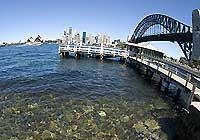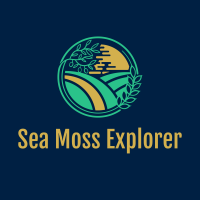
Sydney Harbor, located within Port Jackson in Sydney, Australia is a wondrous scene that is notorious for its splendor. This inlet of the Pacific Ocean is over twenty square miles and more than ten miles long. It is considered to be one of the world’s most excellent natural harbors. Sydney Harbor is even home to numerous naval and military locations, as well as the illustrious Sydney Opera House. As much as Sydney Harbor is such a beautiful site, below the glistening blue waters of the bays they are full of dying and decaying sea life.
All around the world, due to watercrafts, storm water runoffs, and industrial waters, metals like copper, zinc, and lead mix into rivers, seas, and oceans. As for the Pacific Ocean itself, has been the victim of nuclear waste dump, oil spills, plastic, glass, and many other hazardous materials. Throughout my research, many scientists and their crew members have claimed to have fished out large debris, such as; tires, steel rims, cathode ray tubes, bleach bottles, and abandoned fishing nets and hawsers.
We all know that substances such as those mentioned can’t be good for the waters, but just how bad is it?
In one word; bad. Scientists have estimated that on average, there are over six thousand animals per square meter in the Sydney Harbor. The Pacific Ocean’s greatest asset is the shellfish, tuna, swordfish, salmon, sardines, herring, snapper, and thousands upon thousands of small shrimp like creatures called amphipods and crustaceans that feed upon the seaweed out of Sydney Harbor.
This common brown seaweed has been considered the most contaminated in the entire world because of the high levels of copper, lead, and zinc. The brown seaweed absorbs the copper, lead, and zinc which inevitably enter the marine life that use that seaweed as its food source. Sited by www.firstscience.com, the UNSW laboratory and field experiments state that up to 75% of the crustaceans as well as their offspring parish from consuming and being exposed to such dangerous levels of copper, lead, and zinc.
One of the things that we have to realize is that it may be “just the little” marine life suffering, but the larger marine life can be indirectly suffering as well. We all have to remember that there is a food chain going on under the waters… those poor little crustaceans and amphipods are food for bigger marine life. Those that are contaminated by the copper, lead, and zinc that survive long enough to be food for the other marine life, that same copper, lead, and zinc now go into that bigger marine life.
Since there are so many people that really don’t pay attention to the contaminations of our environment, another way to state this type of problem would be in terms of money. Marine life that die due to our industries contaminating the waters will impact the number of tuna, salmon, snappers, and other fish that are available for human consumption. Which down the road, will lead to higher costs to purchase such fish, which could inevitably lead to the demise of not only certain marine life species, but also the demise of our precious fisheries.
Another consideration is those marine life that are contaminated by copper, lead, and zinc who are fished out of the Pacific Ocean before their demise, would actually pass along that high about of heavy metals into the consumer’s body once eaten. Not only does the marine life health suffer, but ours as well.
So, just how bad is copper, lead, and zinc for marine life, the environment, and human health?
When copper is released into the environment it automatically attaches to organic matters and clay or soil. Copper does not break down or disappear when it enters the environment. Anything can be exposed to copper by just simply breathing the air, drinking water, eating foods, or even having direct contact with the copper metal. In humans, small amounts of copper are needed for our health; however large amounts can cause damage to your liver, kidneys, and even cause death.
Marine life is no different, small levels of copper are needed and tend to give some marine life a greenish color and a metallic taste. However, too much copper damages gills, liver, kidneys, and nervous systems of the fish. Higher concentrations of copper can also change the fish’s sense of smell which will eventually harm them from finding their way around, getting back to their mating areas, as well as finding a mate at all.
Lead, before giving any other characteristic, is poisonous. Lead is the end product of radioactive decay, it is resistant to corrosion, and is highly dangerous to humans and marine life because it can quickly cause damage to the nervous systems, and cause many types of blood and brain disorders. Lead has even been linked to the mental disorder, schizophrenia. In marine life, direct ingestion causes the lead toxin to become a lot more concentration and is easily passed up the food chain. Just like humans, symptoms would include vertigo, numbness, nervous system shut down, coma and death.
Zinc, like copper, is an essential mineral found in every living organism and is needed for promoting your body’s reactions and supporting a healthy immune system as well as heal wounds, help to maintain your sense of taste and smell. It is also needed for normal growth and development during pregnancy and your child and adolescent years. Many marine lives already contain a large concentration of zinc. For the human body, we do not store zinc so we need a regular intake of it, however consuming over 60-100 mg of zinc can cause dizziness, vomiting, anemia, fever, stomach pain, as well as acute kidney failure. In the marine life, the level where zinc is considered as highly concentrated to the point of toxicity changes due to the fact that much of the marine life have high levels of natural zinc, oysters being the highest at around 76mg. Toxic levels of zinc have the same type of failures to marine life as it does to humans, except there is a higher loss of taste and smell growth which in the marine world can cause the fish to not be able to locate their home areas, mating grounds, and again, find mates.
In the long run, not only is there the problem of dying fish and money loss from the fish loss, there may not be any fish replacing those that die off in that area. If a fish can’t use their scent of smell that is partially designed to find a mate, there will be no mating, and no new fish. Therefore, contaminating an entire species to death.
So, all and all, the man-made assistance with contaminating the Sydney Harbor can create a downward spiral of disaster for not only our environment, but our marine life, our fisheries, and can go as far as harming us humans inadvertently. It is time to take control at our part of the food chain and find a more environmentally efficient way to thrive, especially in such a highly contaminated area like Sydney Harbor, and make sure that there is still a working food chain. One missing link could create a disastrous domino effect.
